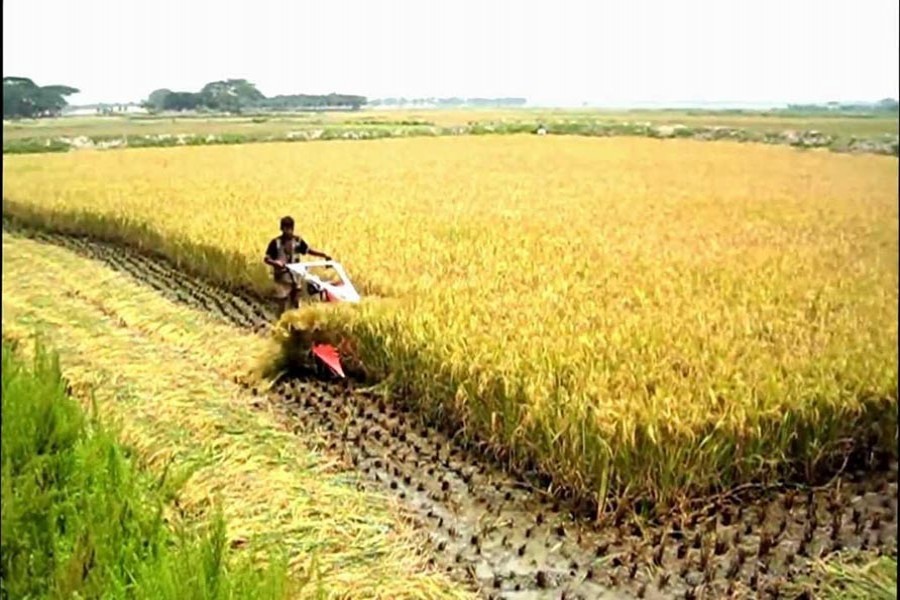Very recently we have seen news items and photos flashed on front pages of newspapers that two deputy commissioners with their staff members are helping farmers in harvesting. In one of the cases, an elderly lady was being helped when she had no one to do the work with her fully ripened crop; a modest yield of paddy was threatened with ruin if not taken off the field immediately. It was a good gesture from the officialdom that they came to assist those in need of service it was their duty to render. In a third case, students of a public university got involved. Still in another, very young family members, who normally do not go to the field now-a-days, came to do the work with the elders. In one case the deputy commissioner purchased paddy directly from the grower. The news that attracted everybody is the involvement of national cricket team's captain Mashrafee Murtaza, also a member of the National Parliament, who advised the deputy commissioner of Narail, which is his own district, to start buying paddy directly from the farmers. All these made news because these were not a normal practice with the country's agriculture, its harvesting and marketing. Why these were done then? A simple answer is that there are certain things in our agriculture that need immediate recognition and serious attention not only for a normal state of affairs to return but also to fine-tune to the changing agricultural landscape.
While one of the problems focussed here is shortage of agricultural labour, the other is the behaviour of the market that keeps prices of produces down due to various factors including presence of the middleman, higher yield and less consumption of the staple food because of a rise in income and purchasing power, no to the mention diversity in the food basket. But the intention of ensuring better price for the producer through direct buying may not be the sole way forward. It may not correct what has been termed `baffling paddy price' by one of the columnists in this paper. However, both tasks of helping the farmers in harvesting and direct buying from them will be a difficult task in the sixty-eight thousand or so villages. There are about 7.8 million hectares of arable land and over 35 million economically active people in agriculture including direct tillers, irrigation-helpers and fertiliser traders, workers in rice mills, much-maligned middlemen and the sellers at the consumer's end. In fact as the population growth rate dwindles every year and the economy diversifies less and less hands are available in the fields for cultivation and at the time of harvesting. Long-term direct buying through field administration and agriculture department bureaucracy will have to move hand in hand with the on-going process of agricultural mechanisation. Modernisation of farming can be a powerful tool for better and rewarding crop management overall.
In a long-term scenario, the working of the normal market mechanism cannot be replaced. The government can only take recourse to occasional price-control measures, by restricting import, or if there be an over-supply because of bumper crop, selling a part abroad. Even subsidising agriculture on a higher degree can be an affordable alternative. For the other issue of crop-cutting and husking, the way open is complete mechanisation The machines involved may be procured regionally as is being done already. The farmers will not sit idle if a way is found out whereby machines and implements will move from one area to another for optimum use. For its greater success, private cooperative farming may be pushed and helped to grow to its full potential.


